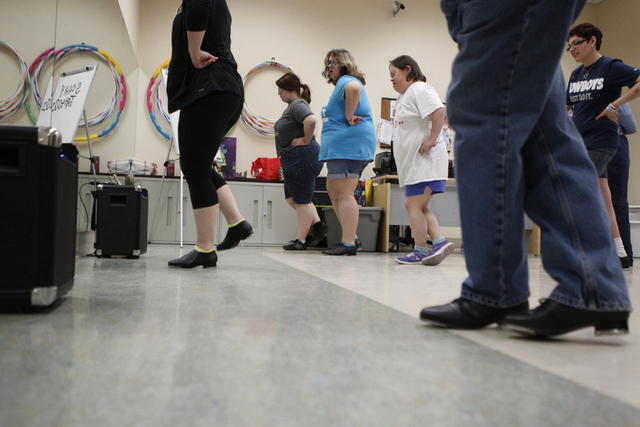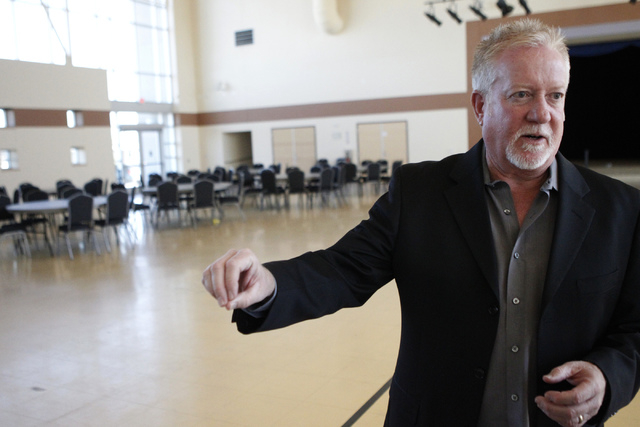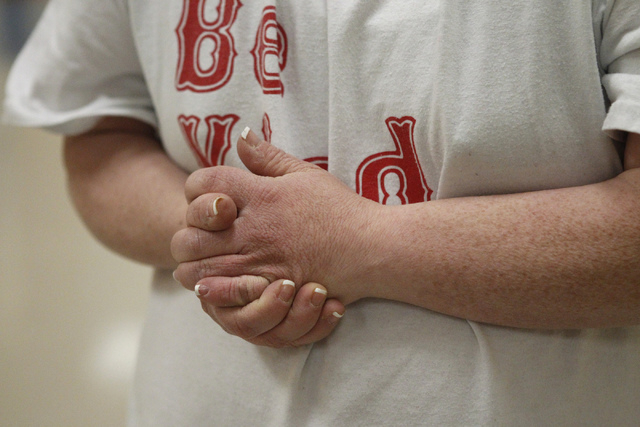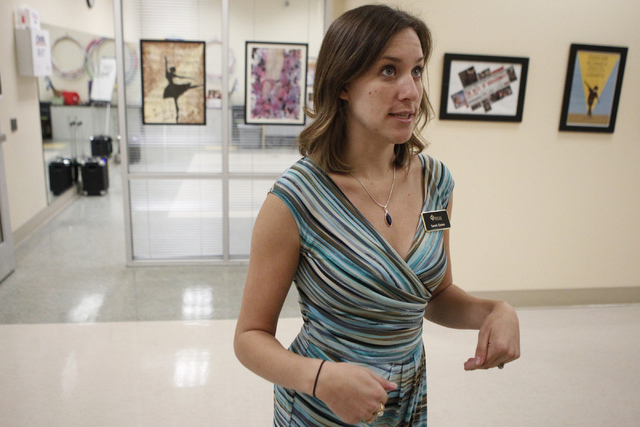Opportunity Village keeps vision of offering resources for disabled
When Claudia Bailey was born in 1947 and diagnosed with Down syndrome a few years into her life, her parents weren’t given many options.
“Children with intellectual disabilities were seen as ineducable and unemployable,” says Linda Smith, the associate executive director of Opportunity Village.
Seeking a better life for her, the Baileys started an organization to offer children with intellectual disabilities resources.
As Opportunity Village celebrates its 60th anniversary, Smith — who came to the organization more than 30 years ago as a mother of a child with a severe intellectual disability — says the group has retained that vision.
“This allows families to keep their child and have a respite relief,” Smith says.
Opportunity Village serves more than 1,500 people with intellectual disabilities daily and more than 3,000 people annually.
There are about 500 people on the waiting list, Smith adds.
Clients, referred to as OVIPs, are 18 and older. Once they reach 23, the school district no longer works with them.
The organization’s operations are spread out among three permanent facilities: the Ralph and Betty Engelstad campus, 6050 S. Buffalo Drive; the Walters Family campus, 451 E. Lake Mead Parkway in Henderson, home to its document management company; and the main campus at 6300 W. Oakey Blvd., host of the Magical Forest.
There is also a temporary campus in the northwestern valley.
From art programs to job training and employment, the organization has expanded over the years to provide just what its name says: opportunity.
Workers who were once told they were unemployable are generating $6 million in wages.
“They are now earning a paycheck,” Smith says.
Without Opportunity Village, the state would have to foot the cost of caring for thousands of individuals with a range of intellectual abilities, Smith says.
“Without Opportunity Village, we would be looking at putting people in institutions,” she explains. “That could be up to $700 a day to take care of my son.”
But the organization is more than a cost-saving measure. It was implanted in the community to be a resource to people, Executive Director Ed Guthrie says.
“We talk to some of the parents about their children,” Guthrie says. “On the days they don’t go to Opportunity Village, the children are miserable to be around. They look forward to coming here.”
Many of these people wouldn’t have a place to go.
“Without Opportunity Village, there would be an awful lot of people sitting at home with their best friend being the TV,” Guthrie says.
What’s more, he adds, many families wouldn’t know what to do without someone to care for their children during the day while they work or run errands.
THE BEGINNING
In the first few months of Claudia’s life, her parents, Al and Dessie Bailey, knew their daughter was different.
Claudia had Down syndrome.
The early years of her life, the Baileys took care of their daughter to the best of their ability.
It was a difficult task then, because families who had children with intellectual disabilities were told to put their children in an institution and carry on with their lives.
The Baileys made it work with their daughter. But Dessie Bailey knew one day, her daughter would need a place to go.
Back then, the school district wasn’t required to serve children like Claudia.
The Baileys reached out to other Las Vegas families to see what options they might have for their children.
In 1954, in an effort to offer their children services, the Baileys banded together with five other families to start the Clark County Association for Retarded Children.
The families raised money to hire a teacher to care for the children.
To fund the program, they also opened a thrift store.
When laws passed in the mid-1960s requiring the school district to offer programming for children with disabilities, the organization evolved.
In 1970, the name changed to Opportunity Village. From there, it branched into new opportunities.
THE PROGRAMS
On a recent day, the employment center at Opportunity Village’s Engelstad campus bustles with OVIPs working on projects they’ve contracted from companies.
Most of the OVIPs come to earn their paychecks by sorting, cleaning and packaging materials. Today’s project: sorting packages of coffee creamers and stirring straws for hotels.
The organization funds 75 percent of its annual operating budget of $31 million through services, fundraisers and donors. The rest is through the state. With contracts awarded to the employment center, the charity can not only pay its OVIPs, but also contribute to its budget.
Smith says the charity has had to innovate to come up with employment ideas.
She has drawn inspiration from her son Chris, who is low functioning. One day, she noticed he liked to shred papers.
“He would sit there in my office just shredding papers,” she says. “If he was low functioning, we figured others would be able to do this job. We thought, ‘How could we use this as a business?’ ”
The Henderson campus is equipped with state-of-the-art equipment to help with document deconstruction.
“We are the largest paper deconstruction in town,” Smith says. They have secured contracts from Wells Fargo and the Internal Revenue Service, among others.
Some people have raised concerns about privacy. But the center is equipped with security precautions to ensure there isn’t any tampering.
“Our mantra is our weakness is our strength,” she says. “Our people can’t read the documents.”
Another job opportunity came up when a chef from The Venetian toured the center and saw the training kitchen.
“He asked if we’d ever consider baking cookies,” Smith says.
He offered to order 500 a week, starting a new job for people.
Years later, they bake 40,000 cookies a week that are sold online or distributed at employee dining halls in hotels.
Today, at the employment center, workers who are ready to move on to bigger employment opportunities might attend janitorial university, learning about techniques and devices in cleaning.
OVIPs do janitorial jobs for the airport, the visitor center at Red Rock Canyon National Conservation Area and the Clark County Government Center.
They also do food service for Nellis Air Force Base.
But Opportunity Village is more than just a job resource.
Brittni T. — last names of clients are withheld for privacy — sits in front of her canvas working on another project.
She’s 22 and has been an OVIP for a little more than a year.
“At first I was shy,” Brittni says. “I didn’t know what to expect.”
But she found that Opportunity Village is a great place to grow as an artist.
“It’s fun to do,” she adds. “I’ve progressed so much.”
Nobody on staff realized her talents as an artist when she first started coming to the organization.
Smith says the art program began about eight years ago when Opportunity Village received a grant from the Boyd Foundation.
“We found that people with intellectual disabilities didn’t get those things in school,” she says. “They don’t get to play an instrument or try out for the dance team.”
Despite the lack of opportunity, many of them had a deep desire to embrace creative outlets.
Opportunity Village’s programs include various types of art such as drawing and painting. Members have even sold pieces and hosted exhibits.
There are also music classes, theater groups and dance sessions where they learn tap, ballet and other styles.
Members have formed musical groups such as the OV Elvie, composed of OVIPs in the dance program.
Another chunk of the budget comes from the thrift store, still operational throughout the 60 years. Through donated items, the store sells anything from clothing to furniture.
Since its founding, the staff has become an adept fundraiser.
When the Oakey campus opened 25 years ago, the group decided a good way to debut it to the community was to put Christmas lights up and invite donors.
“The donors were charmed by the idea,” Smith says. “They asked if they would be on the next night.”
The donors brought back friends, who then brought back friends of friends.
One of the nights, Smith says they decided to brew hot chocolate and sell it along with cookies.
“And that was the first year of the Magical Forest,” she says. “We raised $3,000 selling cookies and hot chocolate.”
The Magical Forest has grown, and in 2013 the organization made $2.3 million on the event.
This is the second year the Magical Forest also has hosted a Halloween event, known as HallOVeen.
It was 10 years ago when Opportunity Village launched the Las Vegas Great Santa Run as a fundraiser, where participants can join in the 5k run or 1-mile walk. More than 11,000 people participated in 2013. Its 10th anniversary is Dec. 6 in downtown Las Vegas.
THE FUTURE
With a gift of $35 million from the Engelstad Family Foundation in May, Opportunity Village launched its $136 million capital campaign.
Much of the money will go to building a 25-acre campus in the northern valley on Decatur Boulevard between Rome Boulevard and Deer Springs Way.
“That way, we will have Opportunity Village in every part of town,” Guthrie says.
Once the new campus opens, it will help the people on the waiting list.
With the capital campaign, the organization has a vision for a residential component.
“We have the first time in history that people with intellectual disabilities are outliving their family,” she says. “As a mom, I’m concerned. It’s a scary thought, who will look after him when I’m gone? The thought of leaving him in the hands of strangers is scary.”
The idea of the residential community would be an integrated space where people with intellectual disabilities will live with other, nondisabled people.
There will also be 24-hour staff in this community.
No matter how big the organization expands, Smith says it will never forget its roots.
“I think if (the founders) saw us today, they would thank us for continuing their actual model of self-sufficiency,” Smith says. “We never lost focus. I think they would be proud they follow their lead.”
Contact reporter Michael Lyle at mlyle@reviewjournal.com or 702-387-5201. Follow @mjlyle on Twitter.

































